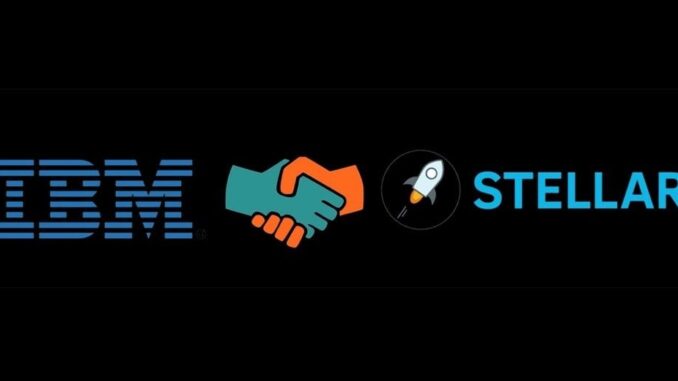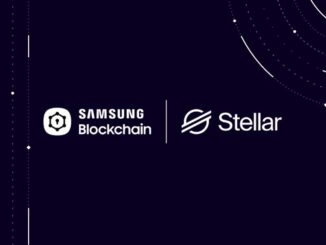
Stellar presents itself as “the future of banking” and aims to become a decentralized payment system for transferring money from country to country and from currency to currency. At the same time Stellar does not plan to go to war with the existing centralized financial structures. It intends to revolutionize the world of payments peacefully by partnering with central banks and integrating cryptocurrencies into the existing financial ecosystem.
However, one difficult war for the existence of Stellar must still be won. To make central banks want to deal with it, it needs to become better than Ripple, in the image of which Stellar was once created by cloning and against which it still looks weaker.
To fight against Ripple and other competitors, Stellar uses technology – a blockchain that works and is already benefiting – and one very powerful ally: tech giant IBM. There are also populist slogans like “give away 95% of the tokens for free to people,” as well as the title “nonprofit charity.
Both Stellar and Ripple are eager to occupy the place now occupied by the SWIFT payment system, which connects all financial institutions of the world with a single network. At first glance, Ripple seems to have a stronger blockchain, more influential allies, and much better funding, but the crucial role can be played by the support of the broad masses of users who prefer Stellar.
The resulting balance of power is reminiscent of the pre-revolutionary situation in Czarist Russia in 1916. The creators of Stellar resemble the poor, small and unpopular Bolsheviks, while the developers of Ripple resemble the affluent liberal bourgeoisie. Both forces are actively arming and recruiting supporters to overthrow the monarch, SWIFT, and take his throne. However, once they succeed, a “civil” war is almost certain to break out, the winner of which is not certain. So those investors who believe in the blockchain revolution in the banking market are pouring money into both Ripple and Stellar to hedge one bet against the other.
An advanced idea at the heart of Stellar
Stellar wants conventional banks with their cash registers, terminals and ATMs to become “gateways” for its blockchain, through which people can conveniently deposit and withdraw money. Inside the decentralized system, money can go from account to account in 2-5 seconds and/or be automatically converted into another currency.
For example, if an entrepreneur in Ukraine with only 300 hryvnias needs to transfer $10 to a supplier’s account in the U.S., he will be able to make this transfer in Stellar or Ripple in one fell swoop, without the hassle of opening a foreign currency account and without the need to wait for the hryvnia-dollar exchange to complete. He will be helped by an “anchor” – a bank, payment service or other reliable intermediary storing and converting hryvnias and connected to Stellar. Putting 300 UAH on deposit favorite “anchor”, the Ukrainian entrepreneur can immediately get him a digital loan of $ 10 and instantly put the dollars to the account provider in the U.S… And the “anchor”, who has received 300 hryvnia, Stellar system will prompt the most favorable rate of buying $10 on its exchange. After purchasing the dollars, the “anchor” will be able to return the hryvnia change to the sender, deducting from it the commission for its services.
What is the role of internal cryptocurrency in the system? Lumens – Stellar tokens – will be needed to pay paltry commissions (about $0.000001 per transaction) and are designed to build bridges. That is, if someone needs to exchange hryvnias for Zimbabwean dollars, but there is no direct market between these two assets, then you can buy lumens for hryvnias, and then buy the required dollars for lumens.
“The People’s Version of Ripple”
The launch of Stellar in 2014 was scandalous and painful for Ripple. Ripple co-founder Jed McCaleb vociferously criticized the system for being centralized, hiding the source code, and functioning as a greedy corporation looking to make as much money as possible from selling XRP tokens. McCaleb’s public announcement of his intention to get rid of the 9 billion XRP he had, caused Ripple tokens to plummet in value by 40% in a single day on May 22, 2014. The conflict, in which Ripple developers froze McCaleb’s funds, caused reputational damage to their project. This precedent of self-dealing frustrated many crypto-investors, showing how a centralized organization can, without consulting anyone, block what it does not like.
Jed McCaleb cloned Ripple into Stellar, announcing that his new project was free of the shortcomings of the old one, and that it would not serve the mercantile interests of a group of investors, but the bright altruistic goal of connecting “people to budget banking services to fight poverty and develop human potential.” There are about 2 billion people worldwide without access to banking services, and Stellar has the potential to give them access to microcredit and micropayments.
The development of Stellar was entrusted to the US registered non-profit organization Stellar Development Foundation (SDF), which borrowed the initial capital ($3 million) from the technology company Stripe, and subsequently repaid that debt with cryptocurrency. Stripe received 2% of the issued 100 billion lumens.
SDF developers moved Stellar to the new Stellar Consensus Protocol in 2015, and by 2017 they rewrote almost all of the software code and announced that Stellar was no longer a fork of Ripple and should be considered unique. Moreover, at the end of 2017, Stellar went on a technological breakthrough, starting to implement the advanced scaling technology Lightning Network and explore the field of smart contracts, where Ethereum dominates and where Ripple has not yet set foot.
Smart contracts are computer programs that check whether all the conditions of a transaction have been fulfilled by its participants and, if so, automatically distribute the assets. Stellar, unlike Ethereum, has limited the ability to create smart contracts on its network, but has provided them with better protection against hacking attacks. Offering faster transaction confirmation (5 seconds vs. 3.5 minutes for Ethereum) and promising high throughput (3,000 transactions per second vs. 7 transactions per second for Ethereum) Stellar has become an attractive platform for ICOs. In January 2018, Mobius Network proved this by successfully launching its decentralized app store on Stellar and raising $39 million by selling its tokens for lumens.
According to SDF, Stellar’s smart contracts support multi-signatures (verification of which participants must approve a transaction and which keys they must enter), grouping/atomicity (the ability to include a group of transactions in one transaction, and to cancel the entire group in the event that any one transaction is rejected) sequencing (sequence numbers that ensure that certain transactions do not start before previous ones) and timelines (time limits beyond which a transaction cannot be completed).
The most surprising difference between Stellar and Ripple was the principle of lumen distribution. The developers of Stellar, just like Ripple Labs, refused to involve miners. They released all the money – 100 billion XLM at once and got it at their disposal. However, unlike Ripple developers who sell tokens in small batches, SDF promised to distribute all the lumens for free, leaving only 5% for operating expenses. 20 billion XLM are to be distributed to bitcoin and Ripple token holders. Another 25 billion XLM are to be given to non-profit organizations. And 50 billion XLM are to be distributed in small incremental amounts to as many people as possible.
| Stellar | Characteristics | Ripple |
| July 30, 2014 | Launch Date | January 1, 2012 |
| $5 million | Funding received | $100 million |
| 103 billion XLM | Total number of tokens | 100 billion XRP |
| Number of coins increases by 1% per year | Inflation | The number of coins is decreasing due to “burning” fees – about 0.00001 XRP per transaction. |
| 81 billion XLM held by Stellar Development Foundation | Number of tokens held by developers | 61 billion XRP held by Ripple Labs |
| Stellar Consensus Protocol | Checking the reliability | Proof of Correctness |
| 2-5 sec | Transaction speed | 4 sec |
| C/C++, JavaScript, GO | Programming languages | C/C++, JavaScript, Java, GO |
| Individuals | Target Market | Financial Institutions |
| Not for Profit | Philosophy | For profit |
| About 20 people | Team | About 200 people |
| $0,15 | Price (Dec, 2020) | $0,32 |
| 3,3B$ | Capitalization (Dec, 2020) | 14,12B $ |
The Road to Recognition
Stellar has not yet agreed to cooperate with any major bank, much less a central bank. However, in 2017, dozens of payment systems wished to become “anchors” and created some fairly wide transatlantic channels for money transfers.
For example, Tempo, a remittance service based in France, formed a financial corridor with Philippine Coins.ph through Stellar. Since mid-2017, Filipinos working in Europe can send euros to their home country to any relative by entering their name and mobile number. Within 5 minutes of sending, the money will arrive at its destination in Philippine pesos. The recipient will see a notification of their arrival on their phone, and using their account at Coins.ph, which will be created automatically, they can withdraw it to a Philippine bank, order home delivery of the cash, or pick up the cash with their own hands. Stellar transfers millions of pesos (tens of thousands of euros) from Europe to the Philippines every day this way.
In addition to Tempo, significant anchor partners of Stellar are or are about to become SatoshiPay and EXCH.one in Europe, B&T Corredora and Remitr in America, Bahrain Finance Company in the Persian Gulf, KlickEx and Novatti in Australia and the South Pacific, SureRemit and Flutterwave in Africa.
Stellar took a big step toward its cherished goal of cooperating with central banks on October 16, 2017, when it entered into a partnership with technology giant IBM. In a press release, IBM said it would use Stellar to make its financial transactions cheaper and faster, and create its own blockchain for multicurrency money transfers as an add-on to Stellar, with which “a farmer in Samoa can make a trade contract with a buyer in Indonesia.
In March this year, IBM Vice President Jessie Land made a surprising announcement to crypto investors that the corporation has no plans to issue its own tokens, because it is satisfied with the internal currency Stellar. IBM itself, it was announced, uses lumens as “fuel” and “intermediate asset” for cross-border transactions, as well as promotes XLM among its customers and “aggressively” persuades financial companies to create digital assets (electronic money, digital currencies and digital gold) on the Stellar blockchain. Jesse Lund suggested that the world is “very close” to seeing central banks one by one start issuing their own cryptocurrencies. And that Stellar has a “very good chance” of becoming a habitat for these cryptocurrencies.
